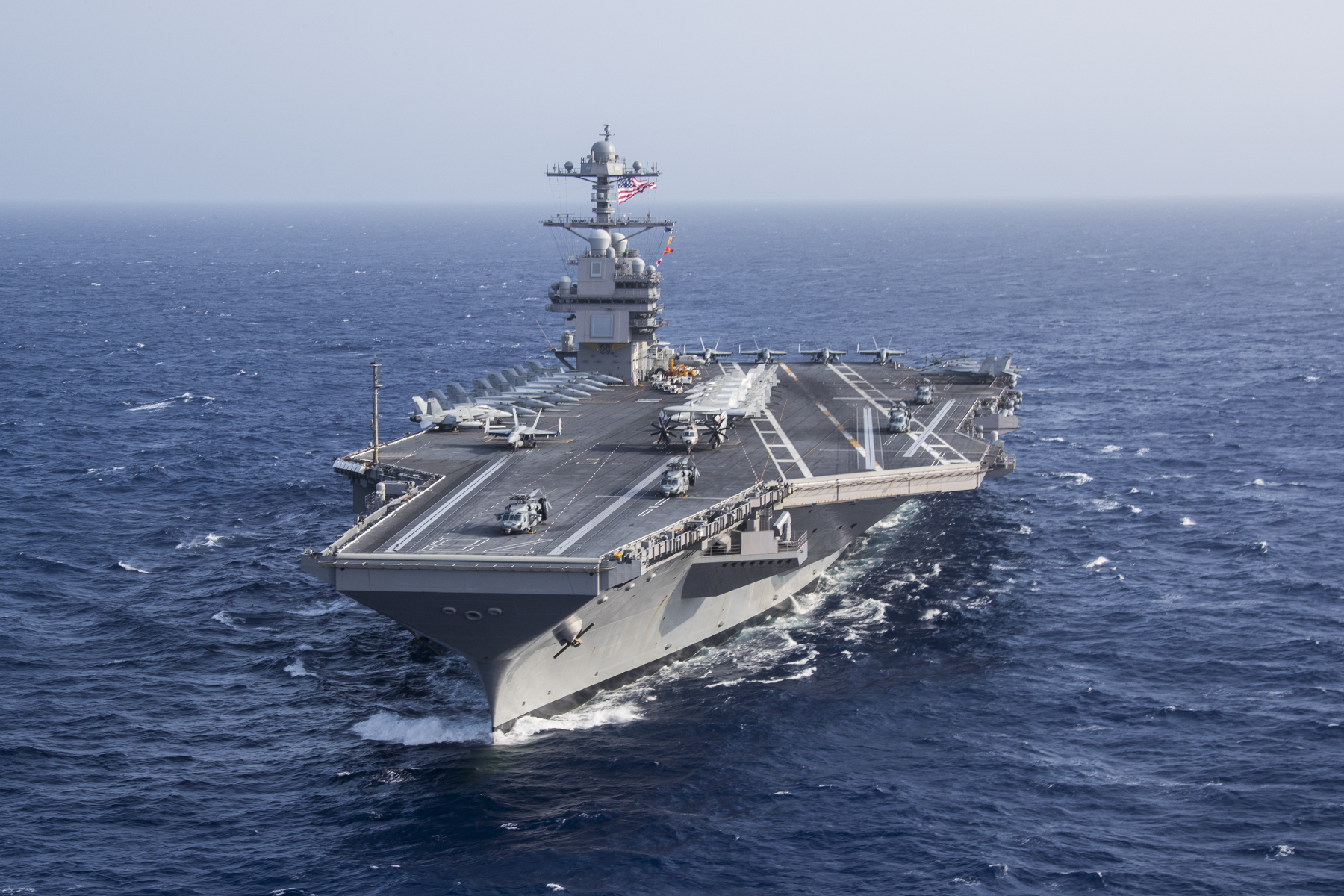A recent set of war game simulations conducted by Chinese military planners suggest that the United States’ most formidable aircraft carrier group, previously considered impervious to conventional weaponry, could be “destroyed with certainty” by a limited number of hypersonic strikes.
Better Than Patriots? Russia’s S-350 Vityaz Downs A Ukrainian Aircraft While Operating In Automatic Mode
In a rare published report, the Chinese military planners have reached a concerning conclusion regarding the Gerald R. Ford aircraft carrier and its accompanying fleet.
They assert that deploying hypersonic weapons can potentially destroy the carrier and its accompanying assets “with certainty,” reported SCMP.
The findings of a war game simulation, specifically focusing on hypersonic strikes against a US carrier group, have been made public for the first time in a paper published in the Chinese-language Journal of Test and Measurement Technology in May.
In a series of more than 20 intense battles simulated on a widely utilized war game software platform employed by the Chinese military, Chinese forces successfully sank the USS Gerald R. Ford carrier fleet using a salvo of 24 hypersonic anti-ship missiles, the report said.

According to the scenario depicted in the simulation, the US vessels persistently approached an island in the South China Sea, claimed by China, despite receiving multiple warnings.
The outcome of the wargame revealed that nearly every US surface vessel was severely damaged and ultimately sank due to the attack. Two hypersonic anti-ship missile models were unleashed in the simulation, some originating from the remote Gobi Desert.
The report claimed that the Chinese military showcased remarkable prowess with their sophisticated launch strategy, employing a complex three-wave attack to outsmart the US carrier group’s formidable defense systems.
The US fleet in the war game comprised six surface ships carefully selected for their advanced technology and unparalleled strength. The flagship was the CVN-78 Gerald R. Ford, accompanied by the CG56 Ticonderoga-class cruiser San Jacinto and four DDG-103 Arleigh Burke-class Flight IIA guided missile destroyers.
The Ford-class carrier, commissioned in 2017, boasts cutting-edge features such as an electromagnetic launch system, advanced radar, and electronic warfare systems.
The carrier group’s cruisers and destroyers were also equipped with advanced weapons and defensive measures, including radar systems capable of detecting and tracking multiple targets simultaneously. The carrier group’s air-defense missile arsenal included 264 missiles, including the RIM-161E SM-3, designed to intercept ballistic missiles.
“Lenient With The Enemy And Strict With Oneself”
The simulation imposed certain limitations on the Chinese military, including restricted access to spy satellites and a limited supply of hypersonic missiles. Guided by the principle of being “lenient with the enemy and strict with oneself,” the war game aimed to provide a realistic assessment.
The two models of anti-ship missiles employed by the Chinese side reportedly showcased impressive capabilities, capable of cruising at high altitudes and reaching a phenomenal top speed of Mach 11. Remarkably, both models could sink a carrier or large warship with just two hits.
The research paper also revealed that one model’s operational range was 2,000 kilometers (1,240 miles) with an 80 percent success rate. In contrast, the other Chinese model boasted double the range and a higher success rate of 90 percent.
However, the report does not provide the exact names of the hypersonic missiles utilized in the simulation. It only focuses on the performance characteristics of the two models employed by the Chinese side.
The PLA detected the US carrier group during the simulation using its sea-based surveillance network. They simultaneously fired eight less-reliable hypersonic missiles from southern and central China.

While some were intercepted, the attack depleted the US fleet’s SM-3 munitions. The report explained that the PLA then launched eight more accurate hypersonic missiles from northern and western China, targeting the carrier, destroyers, and cruiser.
After the attack, four ships survived from the US side, mostly the destroyers due to their soft defense weapons. Electronic warfare systems jammed enemy radar, while chaff and flare dispensers confused incoming missiles.
Once the PLA confirmed the status and locations of the remaining targets, the Chinese military conducted a “mop-up” operation with six less accurate hypersonic missiles after confirming targets.
Running the simulation multiple times, the three-wave attack resulted in an average destruction of 5.6 out of six surface vessels, eliminating the carrier group. Lure tactics and target prioritization were emphasized to maximize effectiveness and conserve ammunition.
Nevertheless, the war game simulation, centered around the South China Sea region, indicates that this area could become a hotbed of conflict between Chinese and US naval forces.
The region has already experienced escalating confrontations between these two forces, further emphasizing the significance of the findings from the war game simulation.
While war game simulations offer valuable insights, they cannot replace real-world testing and evaluation.
That being said, the motives behind China’s release of the war game results remain undisclosed. Also, independent verification of the data used in the war games is impossible.
However, if the data regarding Chinese hypersonic missiles used in the war game simulation deviates significantly from reality, it can undermine the simulation’s quality and result in misleading conclusions.
- Contact the author at ashishmichel(at)gmail.com
- Follow EurAsian Times on Google News




